1960s
The Dobie Gillis Teenage slanguage dictionary
A small dictionary of teenage 'slanguage', created in 1962 by an ad agency to promote The Many Loves of Dobie Gillis, a sitcom that aired on CBS for four seasons.Yes, that's Gilligan on the cover (before he was Gilligan).
More info: libraries.indiana.edu


Posted By: Alex - Sun Dec 17, 2023 -
Comments (3)
Category: Television, 1960s, Slang
Electric Trains and You
A song of the season. This word might come in handy: paraphilia.Paraphilia is the experience of recurring or intense sexual arousal to atypical objects, situations, fantasies, behaviors, or individuals.[1][2] It has also been defined as a sexual interest in anything other than a consenting human partner.[
Posted By: Paul - Thu Dec 14, 2023 -
Comments (0)
Category: Holidays, Toys, Trains and Other Vehicles on Rails, 1960s, Love & Romance
Charmin’s Marshall Money
He's no Mister Whipple!
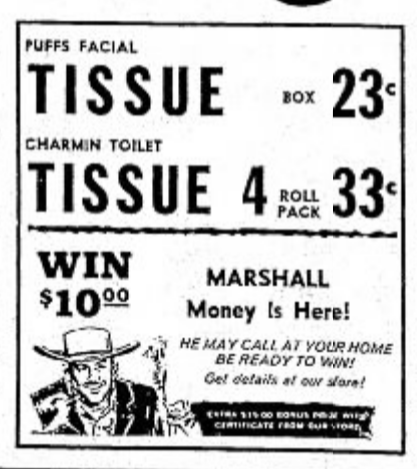
Posted By: Paul - Mon Dec 11, 2023 -
Comments (1)
Category: Hygiene, Premiums, Come-ons, Giveaways, Lossleaders and Freebies, Advertising, Wild West and US Frontier, 1960s
Candidate for Harem
Aug 1964: Marie Miller, a 23-year-old divorcee, announced that in return for $50,000 per year she would be willing to join the harem of Sheik Suleiman el-Haseil who lived in Israel's Negev Desert. She explained that she was responding to a magazine ad apparently placed by the Sheik seeking an American wife.The Sheik responded that he didn't want her in his harem. He explained that he had placed an ad for an American wife back in 1958, but he was no longer interested in one.
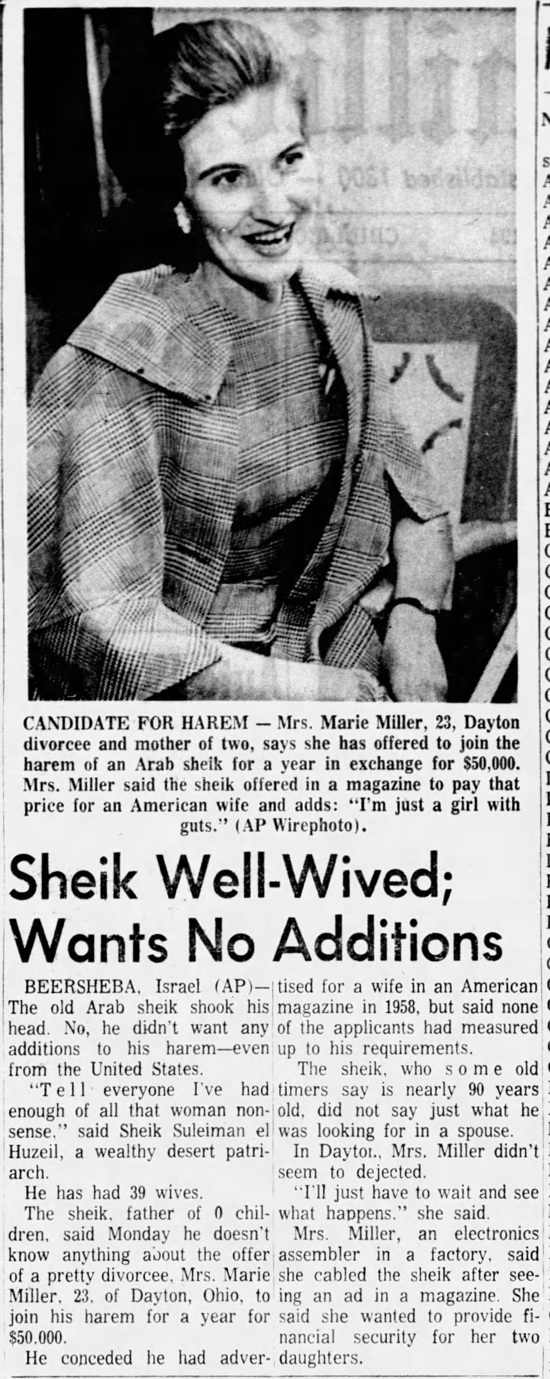
Chillicothe Gazette - Aug 18, 1964
In fact, in December 1957 Sheik Suleiman had been reported to be seeking not just any American wife. He was hoping to marry Eleanor Roosevelt (widow of FDR).

Newsweek - Dec 16, 1957
The stress of the media frenzy following Marie Miller's offer seems to have overwhelmed her, and she ended up in the hospital with a bad back. She was also kicked out of her church.

Dayton Daily News - Aug 27, 1964

Sheik Suleiman (right) with reporter Paul McMahon (1961)
But where exactly did Miller get the idea that Sheik Suleiman was seeking an American wife? I think it traces back to a February 1964 article in HQ magazine by Trevor L.M. Maynard, "I Buy Brides for Arab Sheiks." It described Maynard's lucrative business as a finder of western wives for Arab sheiks, including Sheik Suleiman. He claimed to have arranged 117 marriages between young western women and Arab sheiks.

Click to read full article (pdf)
Posted By: Alex - Sat Dec 09, 2023 -
Comments (5)
Category: Marriage, 1960s
Don’t Go Near the Eskimos
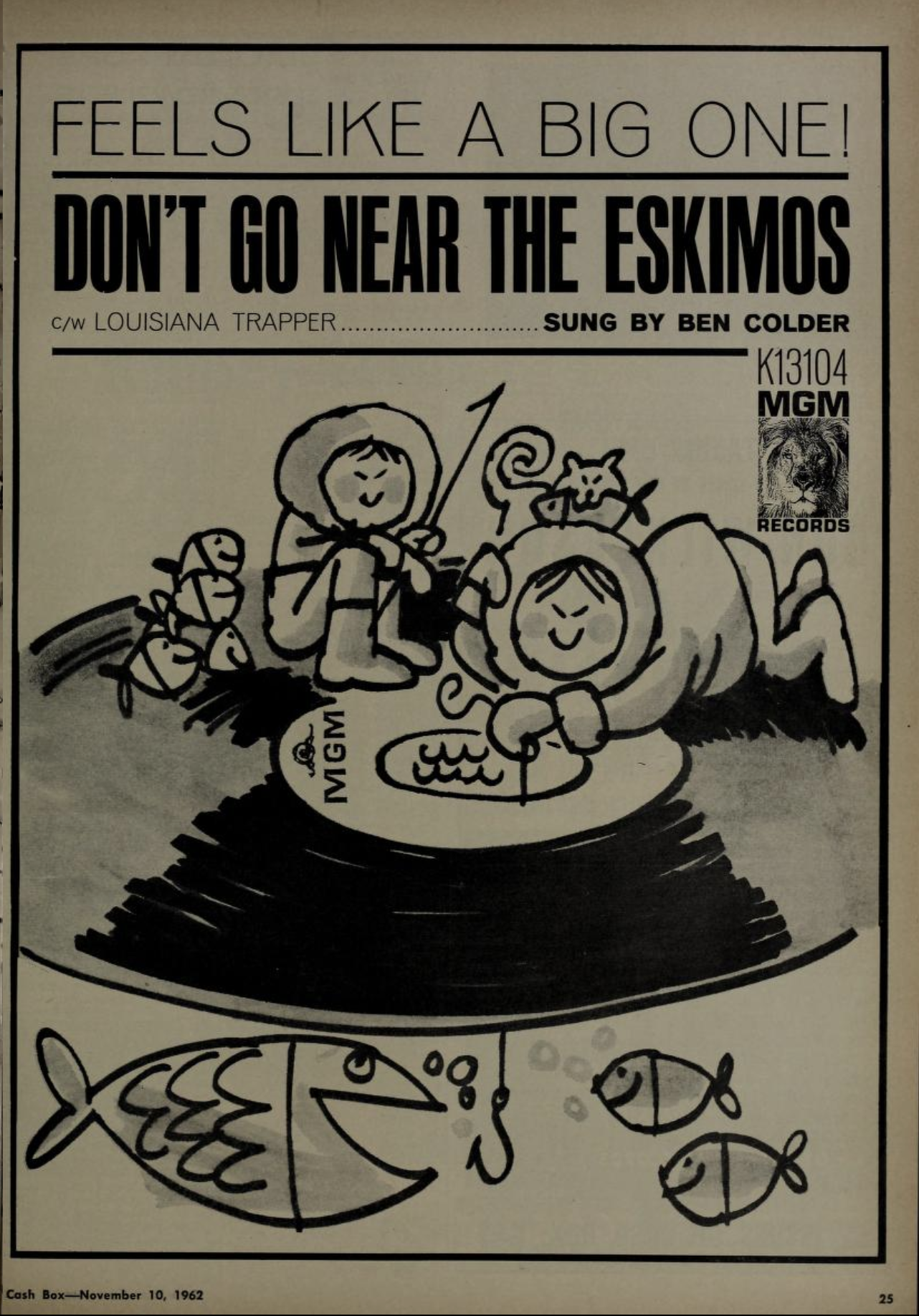
Posted By: Paul - Thu Dec 07, 2023 -
Comments (4)
Category: Ethnic Groupings, Music, Stereotypes and Cliches, 1960s, Love & Romance
The One-Way Mission to the Moon
1962: Fearing that the Soviets were going to beat the United States to the moon, two engineers from Bell Aerosystems Company, John Cord and Leonard Seale, proposed a way to make sure America got there first. Their idea was to send an astronaut on a one-way mission to the moon. After all, it's a lot easier to send a man to the moon if you don't have to worry about bringing him back.They presented their idea at the meeting of the Institute of Aeronautical Sciences in Los Angeles and also published it in the Dec 1962 issue of Aerospace Engineering.
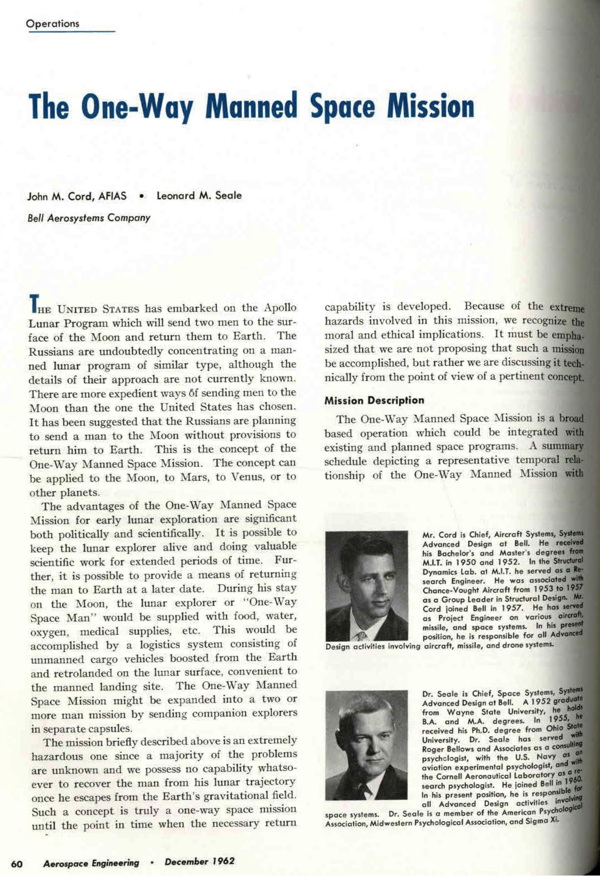
Read the entire article (pdf)
Their plan was for NASA to first land a series of unmanned cargo vehicles on the moon that would contain all the necessities for a lunar base. An astronaut would then make the journey to the moon and, after landing, assemble the base. Every month NASA would send a new cargo vehicle to resupply the astronaut with essentials — food, water, and oxygen. This would continue until NASA figured out a way to bring him back.
NASA, perhaps sensing that the public would perceive a one-way mission as an admission of defeat rather than a sign of victory, ignored the proposal.
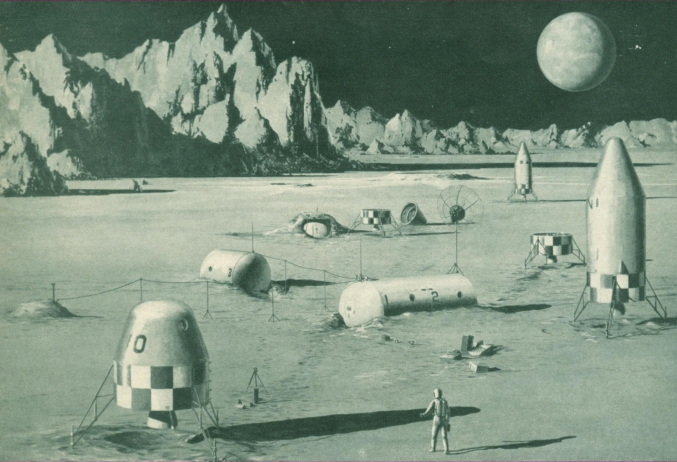
Base for a one-way lunar mission
Although NASA ignored Cord and Seale's plan, it caught the attention of science-fiction writer Hank Searls, serving as the inspiration for his 1964 novel, The Pilgrim Project. Hollywood developed Searls' book into a 1968 movie, Countdown, directed by Robert Altman and starring James Caan and Robert Duvall.
In both the book and movie, NASA succeeds in landing an astronaut on the moon. The astronaut then discovers that the Soviets got there first — but all died.
Posted By: Alex - Wed Dec 06, 2023 -
Comments (8)
Category: Spaceflight, Astronautics, and Astronomy, Space Travel, 1960s
Electrical Stimulation Face Mask
Full patent here.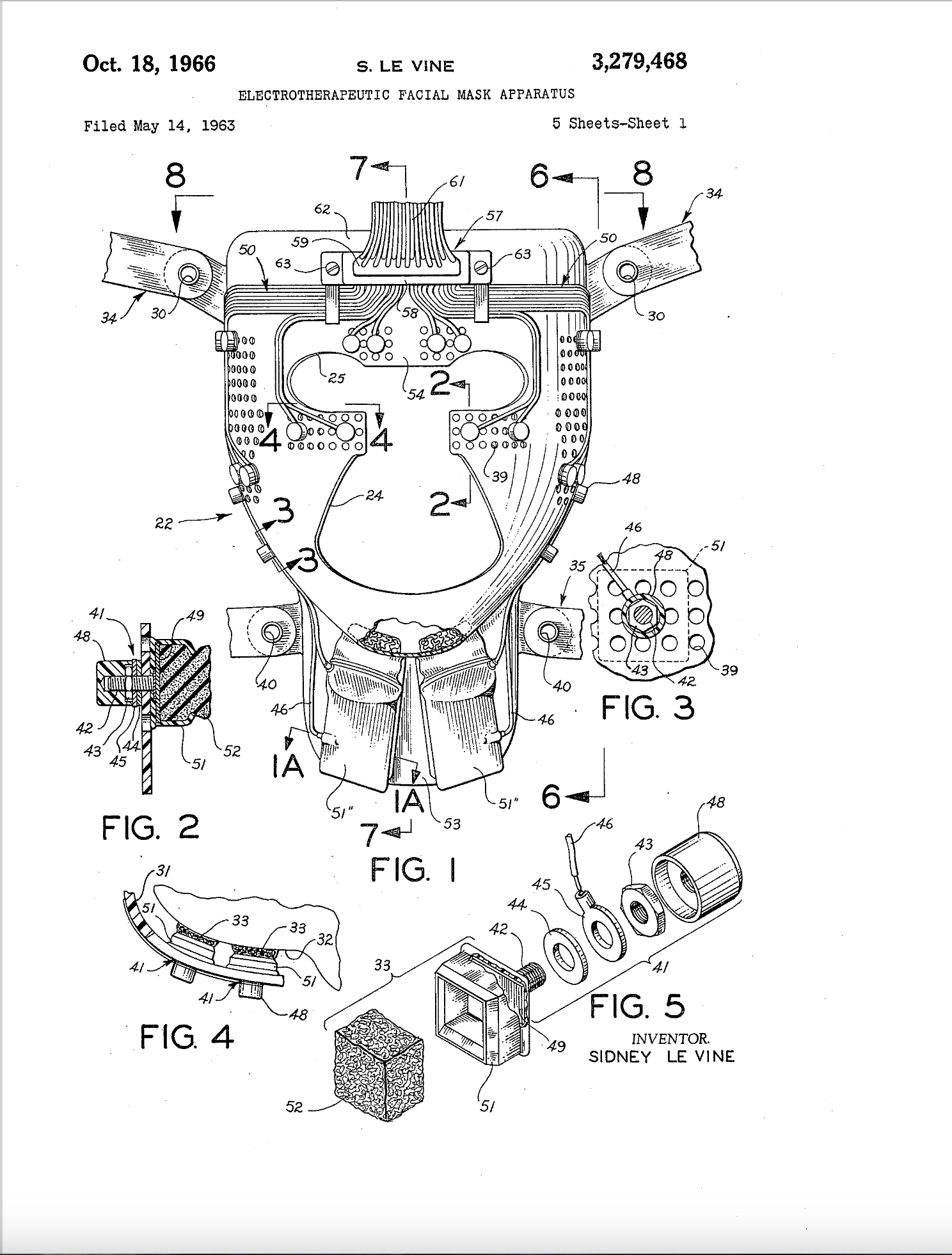
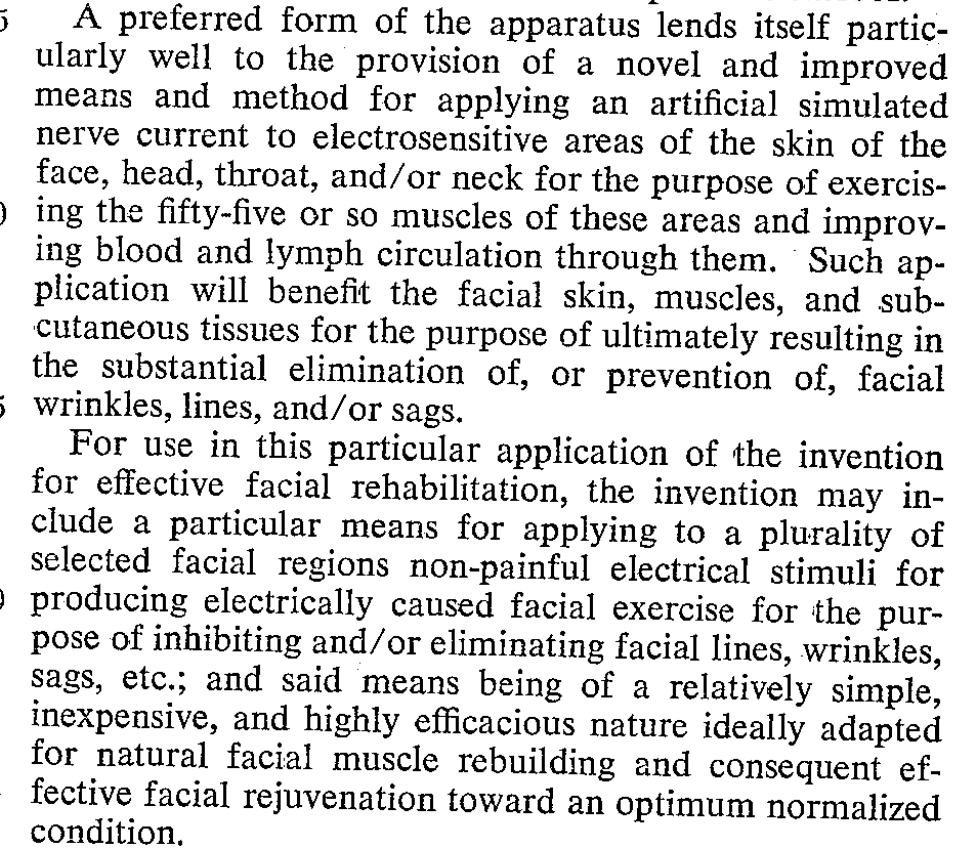
Posted By: Paul - Wed Dec 06, 2023 -
Comments (0)
Category: Frauds, Cons and Scams, Technology, Patent Medicines, Nostrums and Snake Oil, 1960s, Face and Facial Expressions
Follies of the Madmen #583
In 1969, everything had to relate to drugs.Source.

Posted By: Paul - Tue Dec 05, 2023 -
Comments (0)
Category: Drugs, Food, Advertising, 1960s
Christmas in Vietnam
Now that it's December 1st, I feel we can start the Christmas music season here at WU.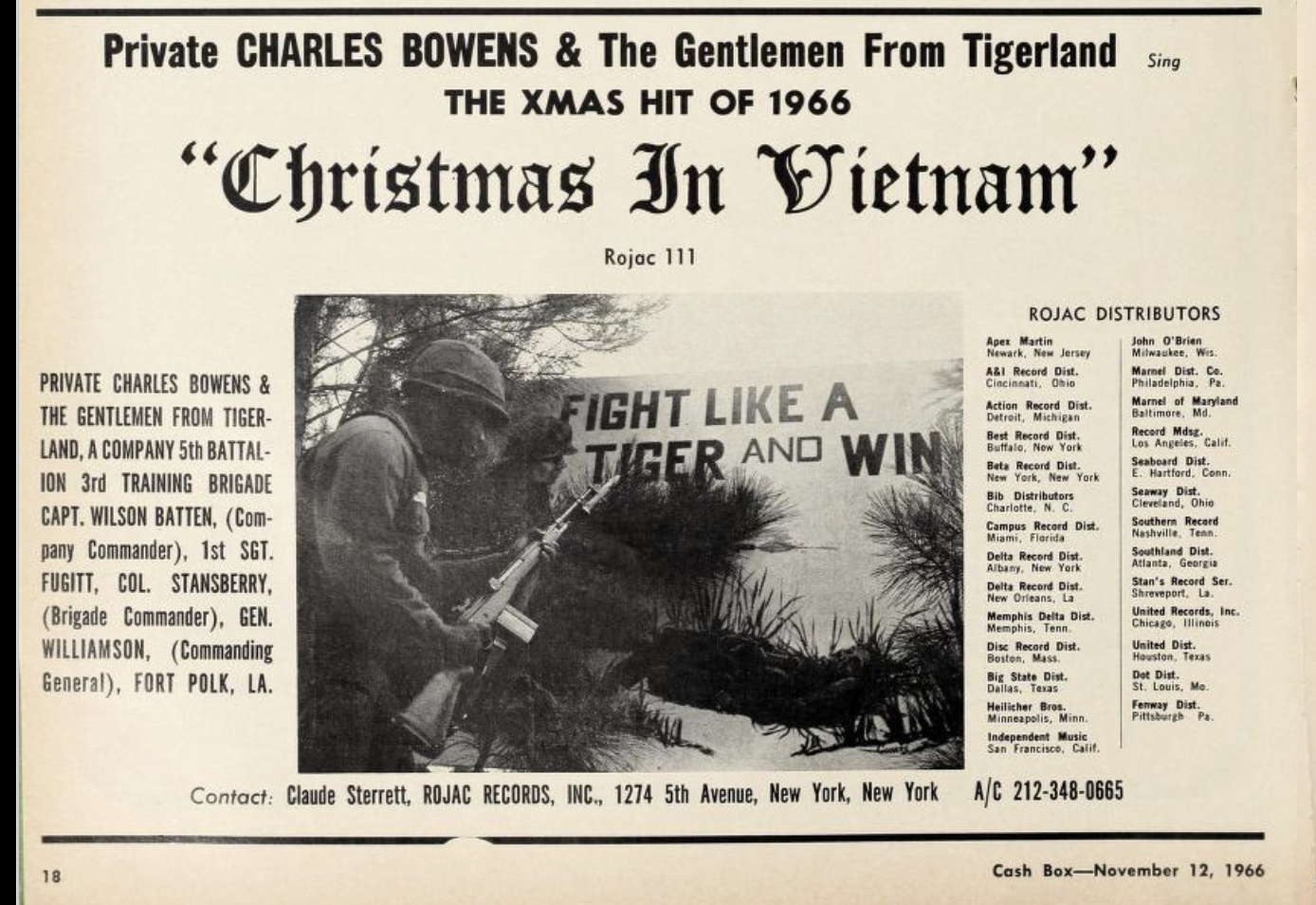
Posted By: Paul - Fri Dec 01, 2023 -
Comments (1)
Category: Holidays, Music, War, 1960s
Rachel Pinney, the Silent Doctor
In August 1961, Rachel Pinney took the following vow: "I intend to maintain silence on every Wednesday until my country formally renounces Nuclear Weapons. This silence is to be maintained non-violently in the face of any provocation."Since Pinney worked as a medical doctor, her vow created some awkwardness with the patients she saw on Wednesdays. She had to communicate with them by means of nodding her head, hand signals, and notes (writing prescriptions).
According to her obituary, she maintained the vow for almost 30 years. Of course, the UK still has nuclear weapons.
Her once-a-week protest reminds me of Mildred Ruth Gordon who fasted every other day to show support for draft resisters.

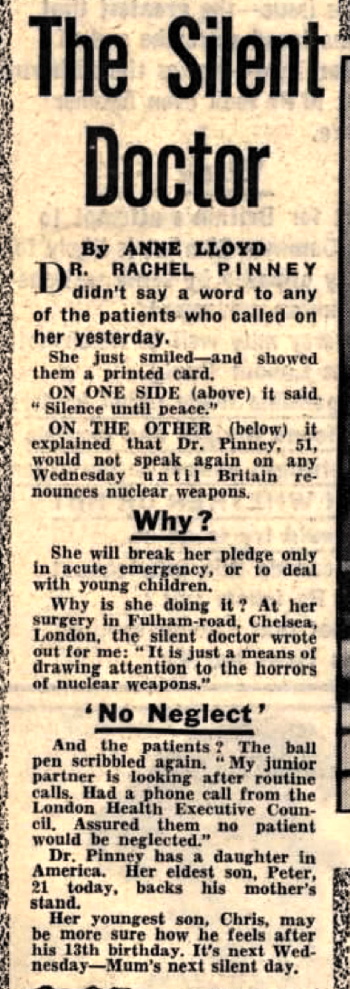
Daily Mirror - Aug 10, 1961
Posted By: Alex - Wed Nov 29, 2023 -
Comments (0)
Category: Riots, Protests and Civil Disobedience, Atomic Power and Other Nuclear Matters, 1960s

| Who We Are |
|---|
| Alex Boese Alex is the creator and curator of the Museum of Hoaxes. He's also the author of various weird, non-fiction, science-themed books such as Elephants on Acid and Psychedelic Apes. Paul Di Filippo Paul has been paid to put weird ideas into fictional form for over thirty years, in his career as a noted science fiction writer. He has recently begun blogging on many curious topics with three fellow writers at The Inferior 4+1. Contact Us |




